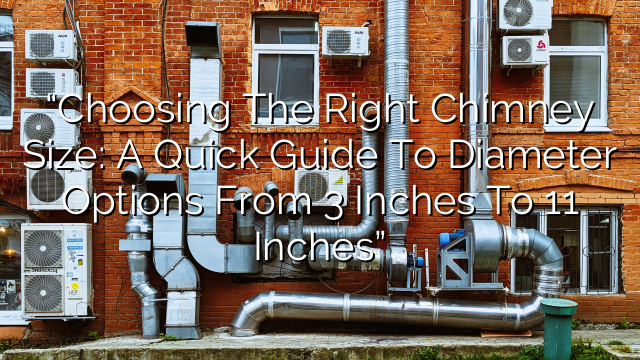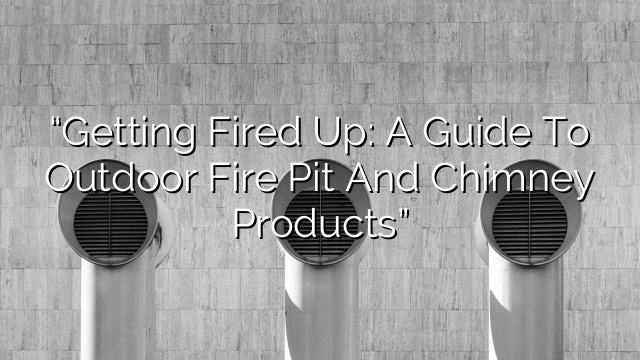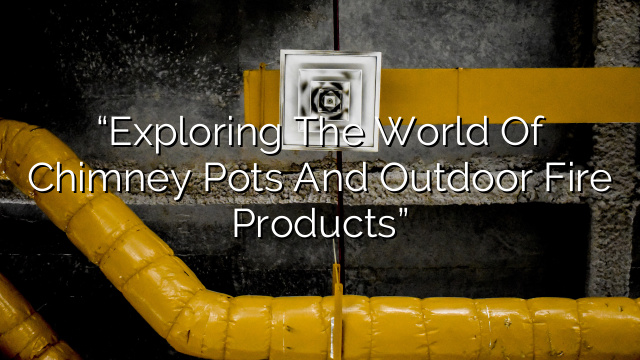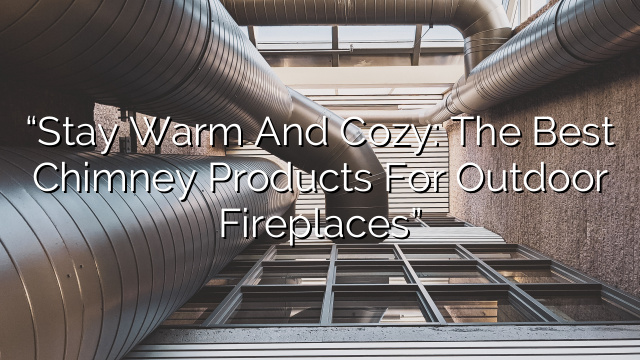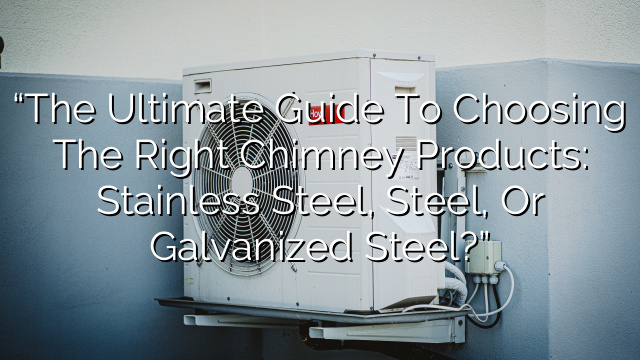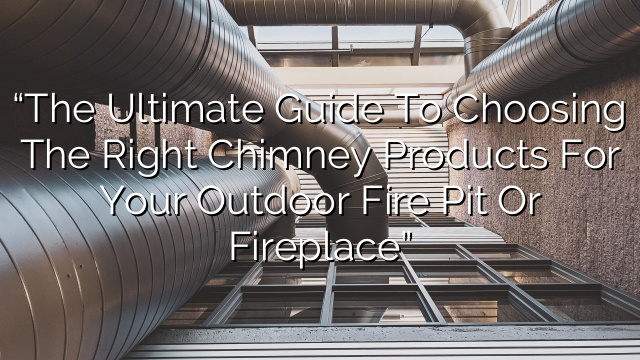Introduction
When it comes to creating a cozy and inviting outdoor space, a fire feature is a must-have. Whether you’re planning on installing a wood-burning fireplace, a wood stove, or a fire pit, choosing the right chimney products and wood stove piping is crucial for not only the safety of your home but also to ensure efficient and effective operation.
Types of Fire Features
Before we dive into the world of chimney products and wood stove piping, let’s take a quick look at the different types of fire features you can choose from:
- Wood-burning Fireplace: A wood-burning fireplace provides the classic and timeless ambiance of a crackling fire. It requires a proper chimney system to safely exhaust the smoke and gases produced by the fire.
- Wood Stove: Wood stoves are standalone heating appliances that can efficiently heat a room or an entire house. They require a chimney system or wood stove piping to vent the combustion byproducts outside.
- Fire Pit: A fire pit is a popular choice for outdoor gatherings and provides a cozy and warm atmosphere. Fire pits can be fueled by wood, gas, or even ethanol. Gas fire pits require proper ventilation to ensure safe operation.
Choosing the Right Chimney Products
When it comes to choosing the right chimney products for your fire feature, there are a few key factors to consider:
- Type of Fuel: The type of fuel you plan to use will determine the size and design specifications of the chimney products you need. Wood-burning fireplaces and wood stoves require a chimney system with a larger flue size, while gas fire pits may require a smaller exhaust system.
- Safety: Safety should always be a top priority when choosing chimney products. Look for products that are UL-listed or tested to ensure they meet safety standards. Additionally, consider factors such as spark arrestors and heat shields to further enhance safety and protection.
- Efficiency: An efficient chimney system can help maximize the heat output of your fire feature and minimize energy wastage. Look for products that are designed to promote proper airflow and minimize heat loss.
- Aesthetics: While functionality is essential, aesthetics also play a significant role in outdoor design. Look for chimney products that complement the style and design of your outdoor space, whether it’s traditional, rustic, or modern.
Choosing the Right Wood Stove Piping
If you’re planning on installing a wood stove, selecting the right wood stove piping is crucial for efficient and safe operation. Here are a few factors to consider:
- Type of Stove: The type of wood stove you have will influence the type of wood stove piping you need. There are different options available, such as single-wall stovepipe, double-wall stovepipe, and insulated stovepipe. Consult the manufacturer’s specifications or consult with a professional to determine the best option for your specific stove.
- Clearance: Clearances play a vital role in wood stove installation. It refers to the distance between the stovepipe and combustible materials such as walls, ceilings, and floors. Ensure you follow the manufacturer’s guidelines for proper clearance to prevent fire hazards.
- Straight and Short Routes: Whenever possible, choose the shortest and straightest route for your wood stove piping. This minimizes the potential for creosote buildup and improves the efficiency of your wood stove.
- Insulation: Insulated stovepipe can help reduce the risk of heat transfer to combustible materials and improves overall safety. Consider using insulated stovepipe when running through walls or ceilings for added protection.
FAQs
- Q: Can I install a wood-burning fireplace or wood stove without a chimney? A: No, a proper chimney system is necessary to safely exhaust the smoke and gases produced by the fire.
- Q: Can I use the same chimney for multiple fire features? A: It is not recommended to use the same chimney for different fire features, especially if they burn different fuels. Each fire feature should have its own dedicated chimney system or piping to ensure safety and efficiency.
- Q: Can I install wood stove piping horizontally? A: Horizontal runs of wood stove piping should be kept to a minimum and should not exceed the manufacturer’s recommendations. Vertical runs are generally preferred to promote proper draft and minimize the risk of creosote buildup.
- Q: Can I use flexible chimney liners for wood stoves? A: Flexible chimney liners are not recommended for wood stoves as they are not designed to withstand the high temperatures and intense operation of a wood stove. It is best to use dedicated wood stove piping for optimal safety and performance.
- Q: How often should chimney products and wood stove piping be inspected and cleaned? A: Chimney products and wood stove piping should be inspected and cleaned at least once a year to remove creosote buildup and ensure safe and efficient operation. However, the frequency may vary depending on usage and the type of fuel you burn.


